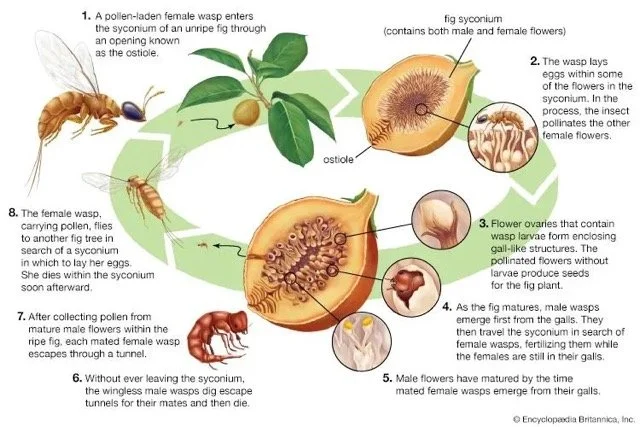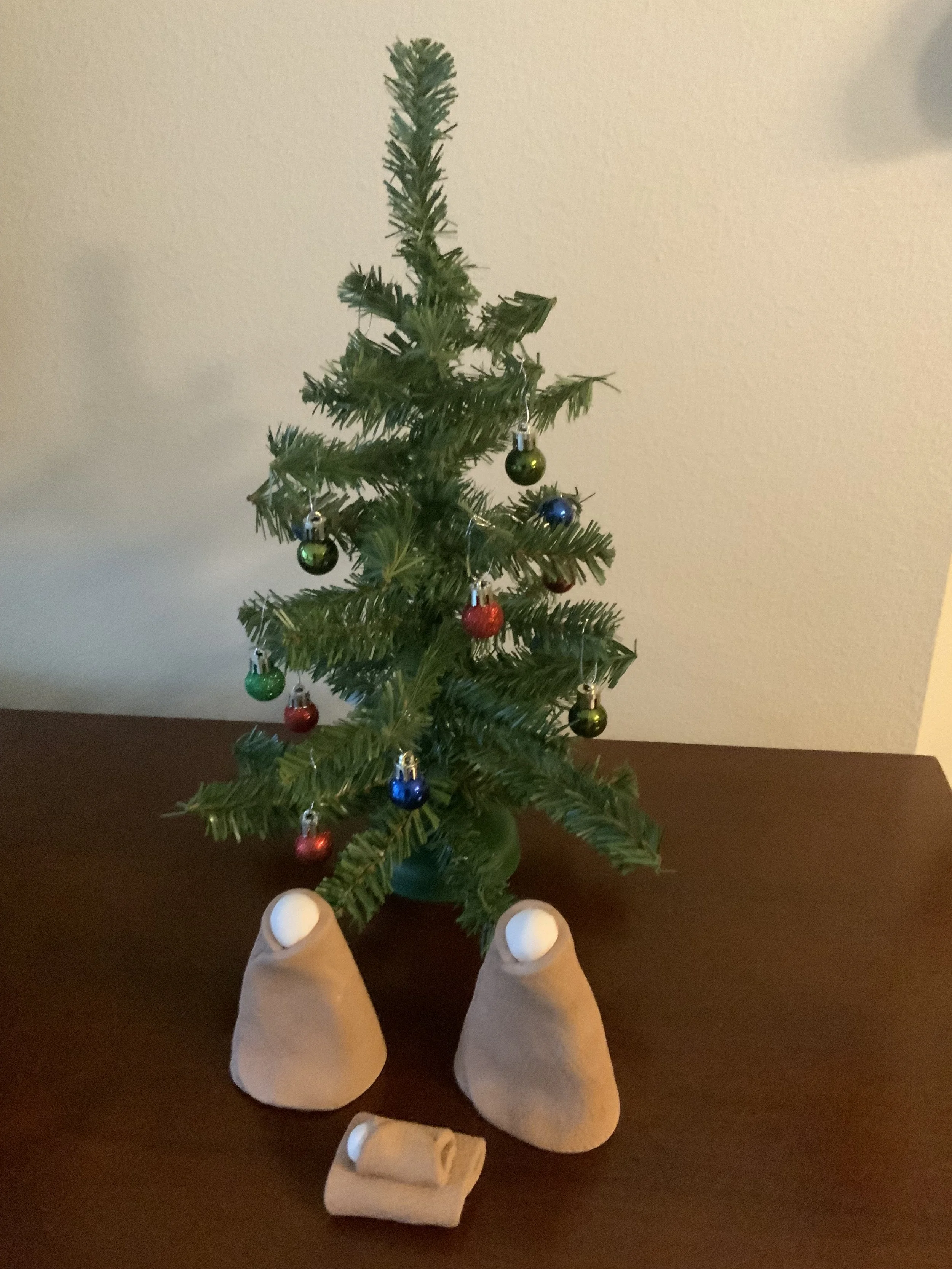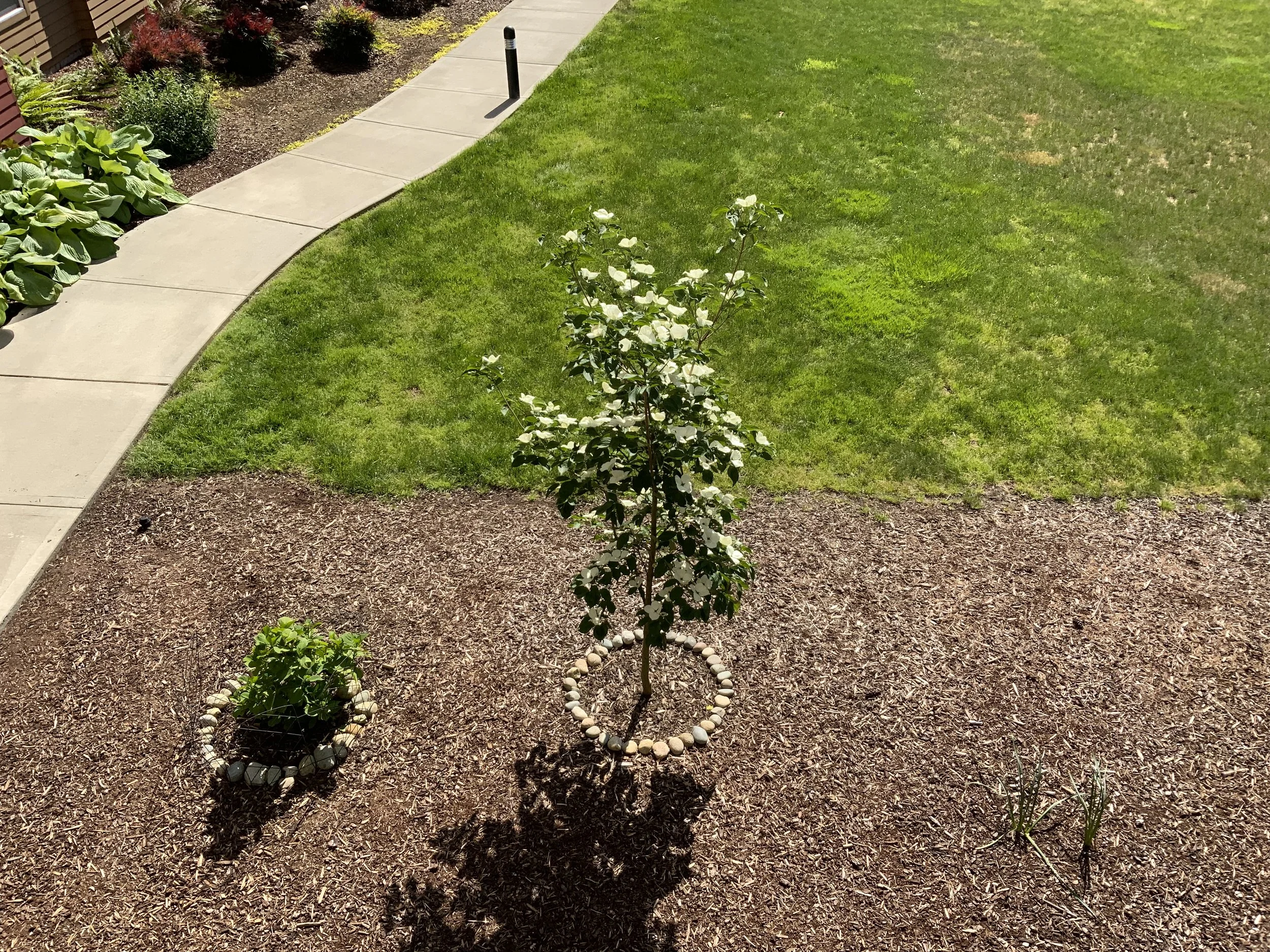#51 A Woman's Briefs -- FIG TREES & FIG WASPS
Really now, by the age of eighty-four it seems reasonable enough to think one knows enough, or at least a little bit about nearly everything but, Oh no.
Who of you has heard of the Fig Wasp? I hadn’t. I happen to very much like the fruit, the fig. I mean, how beautiful is that moist red meat. How satisfying, the crunch of those tiny seeds. I love of crunchy foods.
“Not seeds, Barbara. Flowers.” My eldest sent a video about native figs. Not fruit, when it comes right down to it. Syconium, rather. A fig is a syconium, a tiny group (countless, maybe) of inverted flowers growing inside a pod. Each flower does produce a small seed. That seed is technically the “fruit” of a fig. I won’t bother you with the word “achene.”
Listen carefully. Figs do flower but the flowers never see the light of day. That leathery tear-drop shaped thing we call a fig, is a stem. Inside grows a cluster of flowers needing (as all flowers do) to be pollinated. That stem is a vase holding flowers. And like many vases of flowers, you may well want to check for an insect. In this case, a fig wasp.
Are you with me? I’m turning my attention to the several hundred species of native fig trees and the several hundred species of fig wasps that share reciprocal relationships with the trees. Here’s what I’m thinking
Remember, my field is theology, not biology, so I could be off some in the telling of this remarkable story. But trust me. If I am off, I’m not far off.
So, I begin. When figs on native trees begin to develop, when they are just large enough, the tree emits an aroma simply irresistible to its specific fig wasp buddy. Smaller than an eyelash, and laden with pollen from its birth fig, the female fig wasp will travel up to six miles to find her life’s purpose. The fig tree has prepared for her arrival. See the small circle at a fig’s bottom, the ostiole? It’s composed of an interlocking web. The trees aren’t stupid. What wasp wouldn’t want in? So, fig trees of differing species create ostiolar bracts of differing arrangements that allow the entrance of only their “mutualist wasp.”
Female fig wasp working to enter the ostiole
Perhaps we haven’t paid attention before? It’s time we do.
Female fig wasps do. Don’t let the tiny size of the wasp fool you. She is small enough to slip through a needle’s eye, and while no longer than an eyelash, she has her jaw set. I mean it. Her long, narrow head and strong mandibles chew through the perfectly-sized ostiole and help her not slide backward in fig slime as she chews her way to a field of flowers.
Ah! There, inside the stem, you find fig flowers. Wasp deposits eggs in some. She works fast. She has a life span of hours. Did I mention? Her eggs were fertilized inside the fig where she was born. Before she left home. Did I mention? She carries along pollen from her birth tree which she scatters about as she deposits eggs. She pollenates. Did I mention? This process of her crawl inside is so difficult that her wings, and antennae, will break off along the way. No matter because, did I mention? She’s never leaving the fig. Her work is not for the faint of heart. Nor is learning about it. I mean, this theology person can tell you, there are fig trees aplenty in the Bible but nothing like this.
I might as well say it here. If a female fig wasp arrives at a tree, digs her way in, lays her fertile eggs but doesn’t bring pollen? Forget it! That tree knows when it’s been snuckered. That tree drops her unpollinated figs. So much for her progeny. Let’s hand it to the tree. No cheating. This tree/wasp relationship (as any relationship should be) is meant to be mutually beneficial.
Female fig wasp
It shouldn’t take long to finish this story. Female wasps fly to figs. Claw their way in. Lay fertilized eggs. Distribute pollen. The exhausted female dies. Right there. In the fig. After a few weeks, fully developed wasps emerge from their flower wombs. Males first. The work these near-blind and wingless males must accomplish is astounding, but they are up for it. 95% of the newborns are female. Males chew open the galls of developing winged females and fertilize them. Like that’s not work enough, those spent guys then dig the tunnels that deliver undamaged females to freedom, to the sweet airborne chemical scent of her specific fig trees. Females escape safely because while most males die in the fig (buried there with their mom), the few who did make it out are scooped up by waiting ants. There is no time to waste. Remember, the life span of a fig wasp is fewer than 24 hours.
But wait! There’s more.
What about that dead female (could be more than one) who first chewed into the fig but never left? What about all those males that died in the fig with smiles on their faces? If this isn’t perfect, I don’t know what is. At the ready, wasp-dependent fig trees produce a digestive enzyme called ficin. Ficin breaks down wasp bodies, dissolves them, converts this muck into protein that makes a mix of nutrients used to nourish the fig (I called it muck. I’m not sure it is).
No, you don’t crunch on dead wasps when you enjoy a fig (if you can now). You crunch on seeds, the remains of flowers. All but the seed (unfertilized, undeveloped ovaries, to be accurate) is gone.
Now, is this process not the most amazing thing? Is it of a God? Is it of Chance? Is it Evolution itself? Is it the Universe to which/whom so many appeal for meaning?
I favor an opinion but I don’t have the answer. I can only say this: Who or Whatever is responsible for so stunning a beneficial alliance in nature might have done a better job when it came to designing the human species and its relationship to nearly everything. Amen
SCROLL DOWN TO LEAVE COMMENTS








